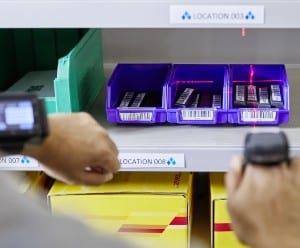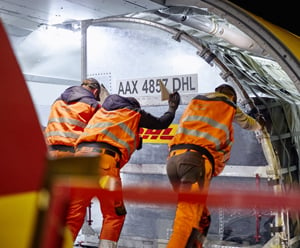數位化如何轉變 DHL國際快遞的營運方式

DHL國際快遞 (DHL Express) 的先進品質管控中心 (Advanced Quality Control Center; AQCC)位於跨網絡各營運中心中,當其系統控制台的紅色警示燈同時亮起時,各單位的現場氣氛仍保持相當平穩。
因為搭載人工智慧的AQC鎮C系統,以卓越的資料分析能力掌控全局 。AQCC系統是專為監控貨件移動和即時通報問題所設計。
系統可快速找到困在運輸途中的貨件位置,並且在地圖顯示預計的運送路線。接著團隊的分析師會積極介入,採取修正行動,確保這些貨件仍然能準時抵達目的地。
對DHL Express等物流業者而言,這種看似容易的任務,過去需要耗費眾多人力,但數位化已經逐漸改變處理事情的方法。
物流業長久以來被視為傳統產業,需要人力勞動和重複性作業。受到老舊流程和過時IT系統的阻礙,愈來愈多物流公司察覺到需要善用科技,才能在快速變遷的產業中保持競爭力。
德國郵政DPDHL集團依循「策略2025 (Strategy 2025)」所訂定之提供卓越數位服務的目標,於2021年至2025年期間,投資超過20億歐元發展數位轉型專案,改善客戶與員工經驗的同時,也提升卓越營運效率。
DHL Express在全球超過220個國家與地區的3,200座設施,仰賴領先的科技解決方案,每年運送近5億件貨物 (根據2020年數據)。
觀賞: Ken Lee對亞太地區數位化的觀點
DHL國際快遞亞太區執行長Ken Lee表示:「藉由持續不斷聆聽我們的客戶需求,我們已實行與顧客、員工及營運方面最相關且有意義的科技創新。我們導入解決方案以精簡重要流程,讓耗時的重複性作業自動化,同時協助我們的團隊提升生產力。這些方案包括運用自動導航搬運車,加強我們的營運流程;利用聊天機器人搭配客服作業;以及具紀錄和追蹤能力的貨件感應器。」
新冠疫情進一步證明數位轉型計畫與投資的重要性,協助解決跨境電子商務貨運需求暴增的問題,帶來更高的效率及生產力。
DHL 國際快遞亞太區資訊長Jimmy Yeoh 表示:「在疫情爆發前,我們認知到數位轉型是維持及提升物流供應商服務水準之刻不容緩要務。疫情加速數位轉型計畫,讓我們位在任何地點的人力可透過虛擬方式,彼此互助合作。我們也能快速追蹤所採用及推動的科技,像是即時聊天和數位助理,協助我們處理來自世界各地、前所未有的貨運需求暴增。」
若要進一步瞭解數位化對DHL 國際快遞的影響, 《Logistics of Things》更深入探討近幾年所推動的重要數位轉型專案:









 繁體中文(台灣)
繁體中文(台灣)